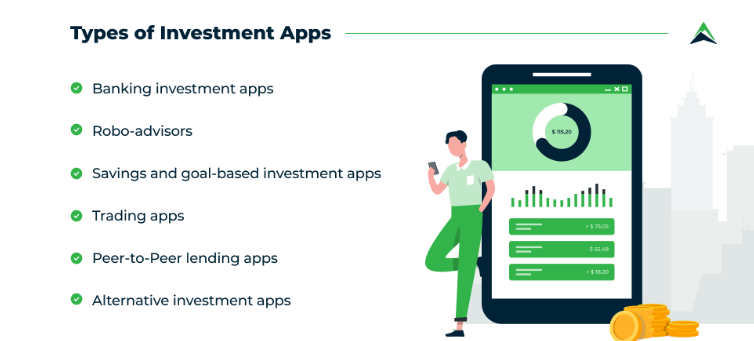How to Use Investment Apps and Tools to Your Advantage
In today’s digital world, investing is no longer reserved for Wall Street professionals or the ultra-wealthy. With a smartphone and a few taps, anyone can start building wealth from the comfort of home. Thanks to a wide range of investment apps and tools, managing your money has never been easier or smarter.
Whether you’re a beginner or an experienced investor, this guide will show you how to use investment apps and tools to your advantage.
Why Use Investment Apps and Tools?
Modern investment tools are designed to make investing:
-
Accessible – You can start with as little as $5.
-
Convenient – Invest anytime, anywhere.
-
Educational – Learn as you grow.
-
Automated – Let algorithms help manage your portfolio.
Whether you’re tracking stocks, setting goals, or diversifying across assets, the right apps can streamline the process and help you make more informed decisions.
🔑 Key Features to Look For
Not all apps are created equal. Here’s what to look for in a good investment app:
| Feature | Why It Matters |
|---|---|
| Low or No Fees | Helps maximize your returns. |
| User-Friendly Interface | Easy navigation is crucial for beginners. |
| Fractional Shares | Allows you to invest in big companies with little money. |
| Automated Investing | Robo-advisors manage your money based on goals. |
| Real-Time Data & News | Stay informed with market updates and alerts. |
| Educational Resources | In-app lessons, tutorials, and blogs boost your knowledge. |
🛠️ Popular Investment Apps and What They Offer
1. Robinhood
-
Commission-free trading of stocks, ETFs, and crypto.
-
Great for beginners who want a clean, simple interface.
-
Offers fractional shares and real-time market data.
2. Acorns
-
Rounds up your daily purchases and invests the spare change.
-
Ideal for passive investors and those new to investing.
-
Includes automated portfolios based on your risk tolerance.
3. Wealthfront & Betterment
-
Robo-advisors that build and manage your portfolio.
-
Tax-loss harvesting and automatic rebalancing features.
-
Great for long-term, goal-based investing.
4. Fidelity, Vanguard, Charles Schwab
-
Trusted brokers offering both app and desktop platforms.
-
Access to low-cost index funds and retirement accounts.
-
Great for serious investors seeking more control.
5. Yahoo Finance / Seeking Alpha
-
Best for market research, news, and stock analysis.
-
Offers watchlists, financial data, and earnings reports.
🧠 How to Use These Tools to Your Advantage
✅ 1. Set Clear Investment Goals
Most apps prompt you to define your goals: retirement, buying a home, saving for college, etc. Let your goals guide:
-
Your risk tolerance
-
Your timeline
-
Your monthly contributions
✅ 2. Start Small but Be Consistent
Apps like Acorns and Stash allow micro-investing—perfect for building habits. Set up automatic deposits, even if it’s just $10 a week.
✅ 3. Automate Everything
Use robo-advisors or auto-invest features to:
-
Keep your portfolio balanced
-
Invest on a regular schedule
-
Avoid emotional decision-making
✅ 4. Track Performance
Use tools like Personal Capital or Mint to track:
-
Investment growth
-
Asset allocation
-
Net worth
✅ 5. Diversify Easily
Apps make it simple to spread your money across:
-
Stocks
-
Bonds
-
ETFs
-
Real estate
-
Crypto
Diversification reduces your risk and helps smooth out returns.
✅ 6. Learn as You Go
Use in-app tutorials, articles, and demo accounts (like Public’s simulated trading) to:
-
Understand key terms
-
Learn new strategies
-
Build confidence before investing big
⚠️ Common Mistakes to Avoid
Even with the best tools, some pitfalls can derail your progress:
-
Chasing hot stocks or trends
-
Investing without understanding the product
-
Checking your portfolio too often and panicking
-
Ignoring fees or hidden charges
-
Putting all your money in one stock or sector
The key is to invest with a plan, not on impulse.
📌 Final Thoughts
Investment apps and tools have revolutionized personal finance, empowering individuals to take control of their financial futures. Whether you’re just starting or looking to optimize your portfolio, the right tools can make a huge difference.
Start by identifying your goals, then choose a platform that aligns with your needs and preferences. Automate, diversify, and keep learning—and let your money work for you in the background.


